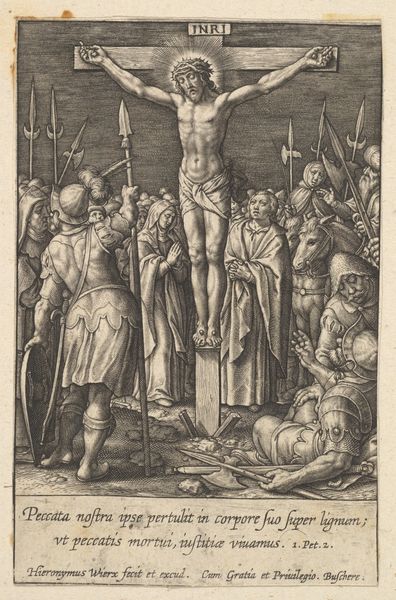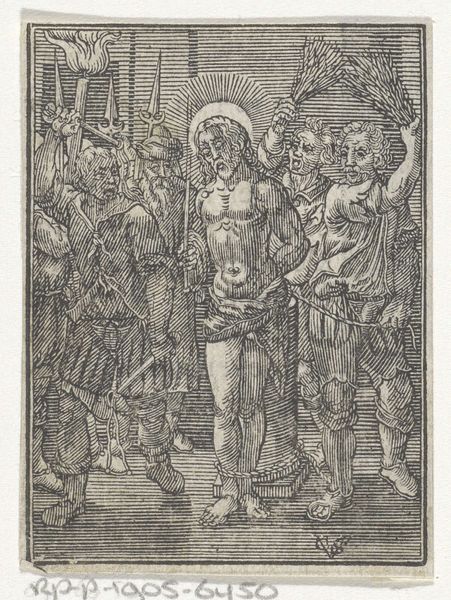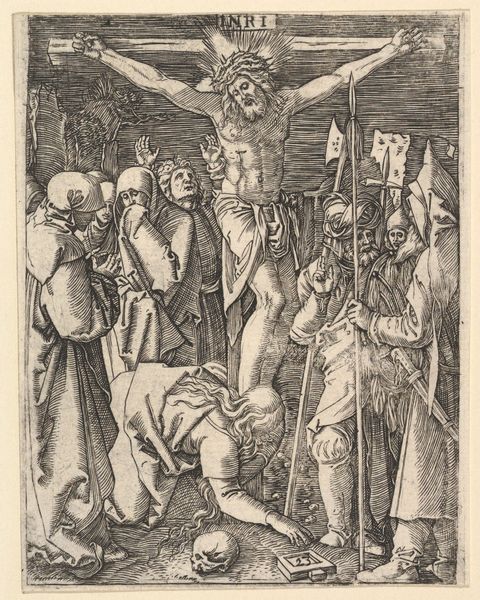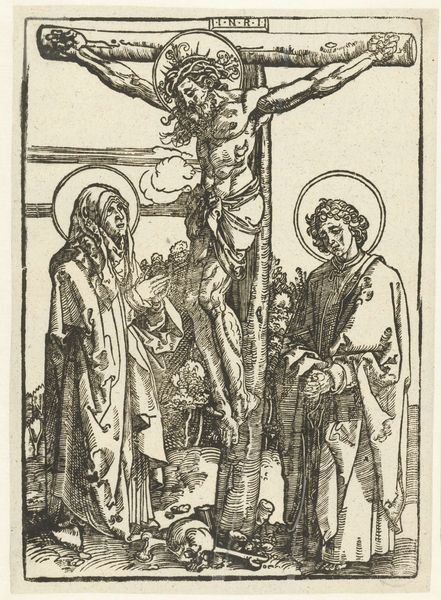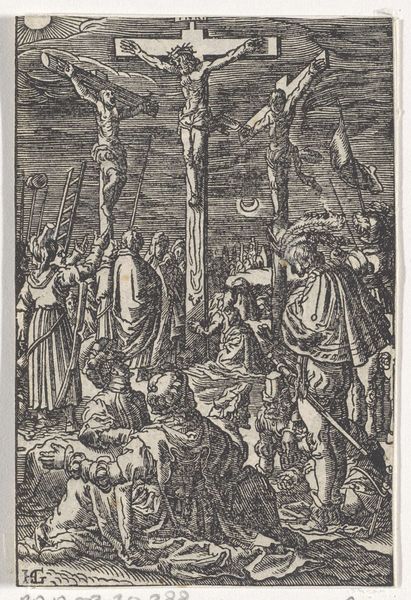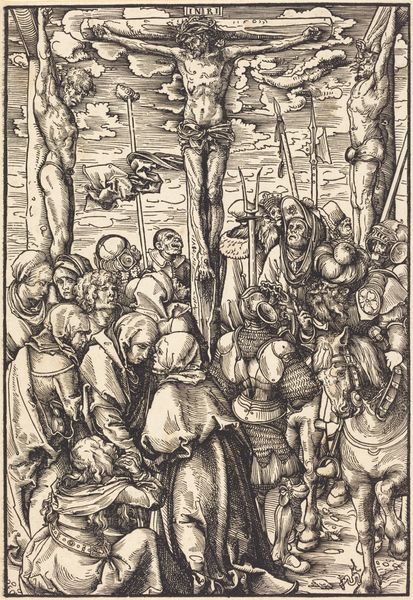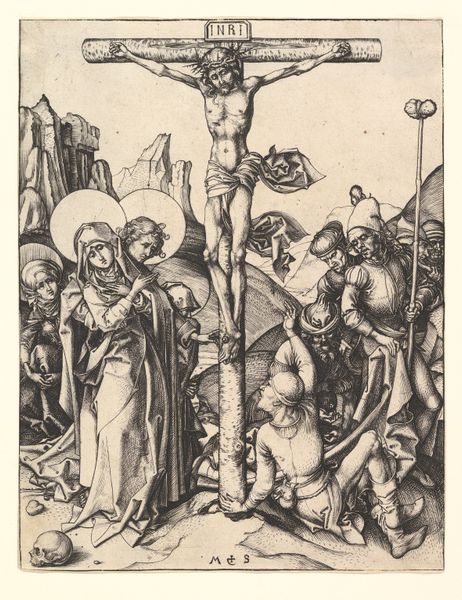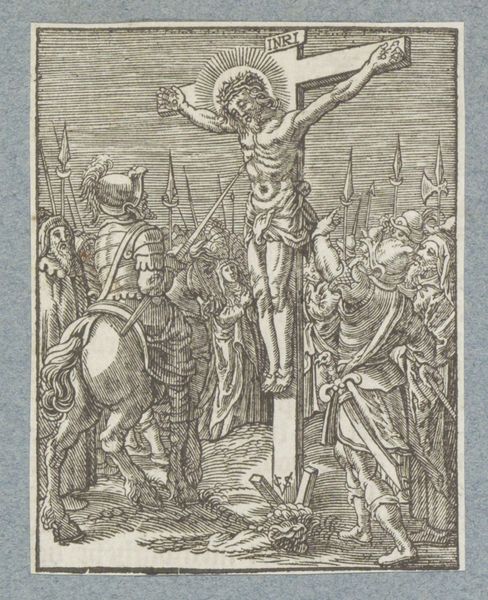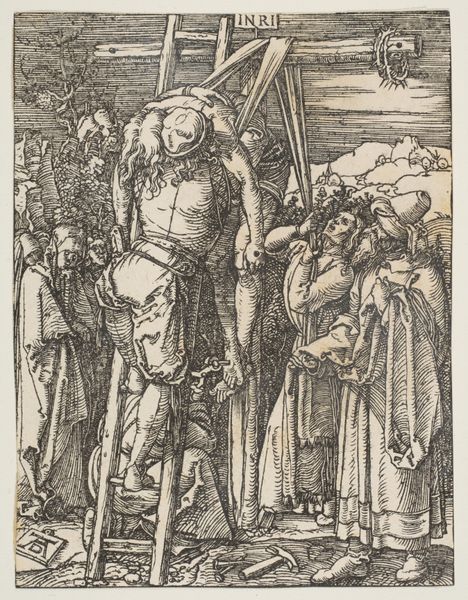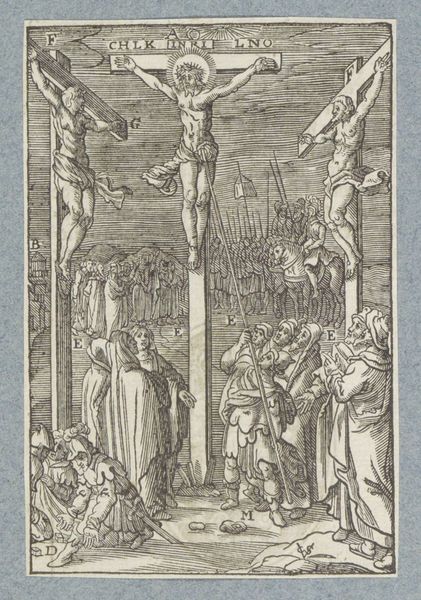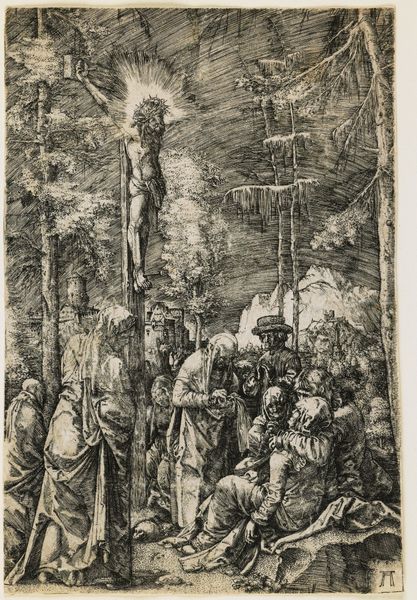
print, engraving
#
medieval
#
narrative-art
# print
#
figuration
#
history-painting
#
engraving
Dimensions: height 76 mm, width 57 mm
Copyright: Rijks Museum: Open Domain
Editor: This engraving, titled "Christus aan het kruis," was created between 1648 and 1657 by Christoffel van Sichem the Younger, and it depicts the crucifixion. I'm immediately struck by how densely packed the composition is. It almost feels claustrophobic. How should we interpret this piece, especially considering it is a print? Curator: It’s vital to consider the means of production here. Engravings like this were often made for mass consumption. Think about the labor involved in creating the printing plates, and then the countless copies that could be distributed. Editor: So, it wasn't necessarily about the 'aura' of a unique artwork? Curator: Precisely. We need to look at this not just as an artistic expression but as a commodity, part of a network of production and distribution. Consider who was buying these prints and why. How might the social context influence its subject matter and visual style? Editor: Given its religious subject matter, would it have been consumed as propaganda or even personal devotion? And what kind of labor was involved? Was the engraver considered an artist or an artisan? Curator: The line is deliberately blurred. The value wasn’t only aesthetic; it lay in its didactic purpose and wide accessibility. As for labor, the engraver likely worked within a workshop system. Think of the material cost of the copperplate, the inks, the paper—all crucial components. Editor: So by examining the material conditions of its creation and reception, we understand its cultural function. Fascinating! Curator: Exactly. By focusing on the materiality and production process, we move beyond traditional art historical narratives. I've learned just how material-centric art history can be!
Comments
No comments
Be the first to comment and join the conversation on the ultimate creative platform.
